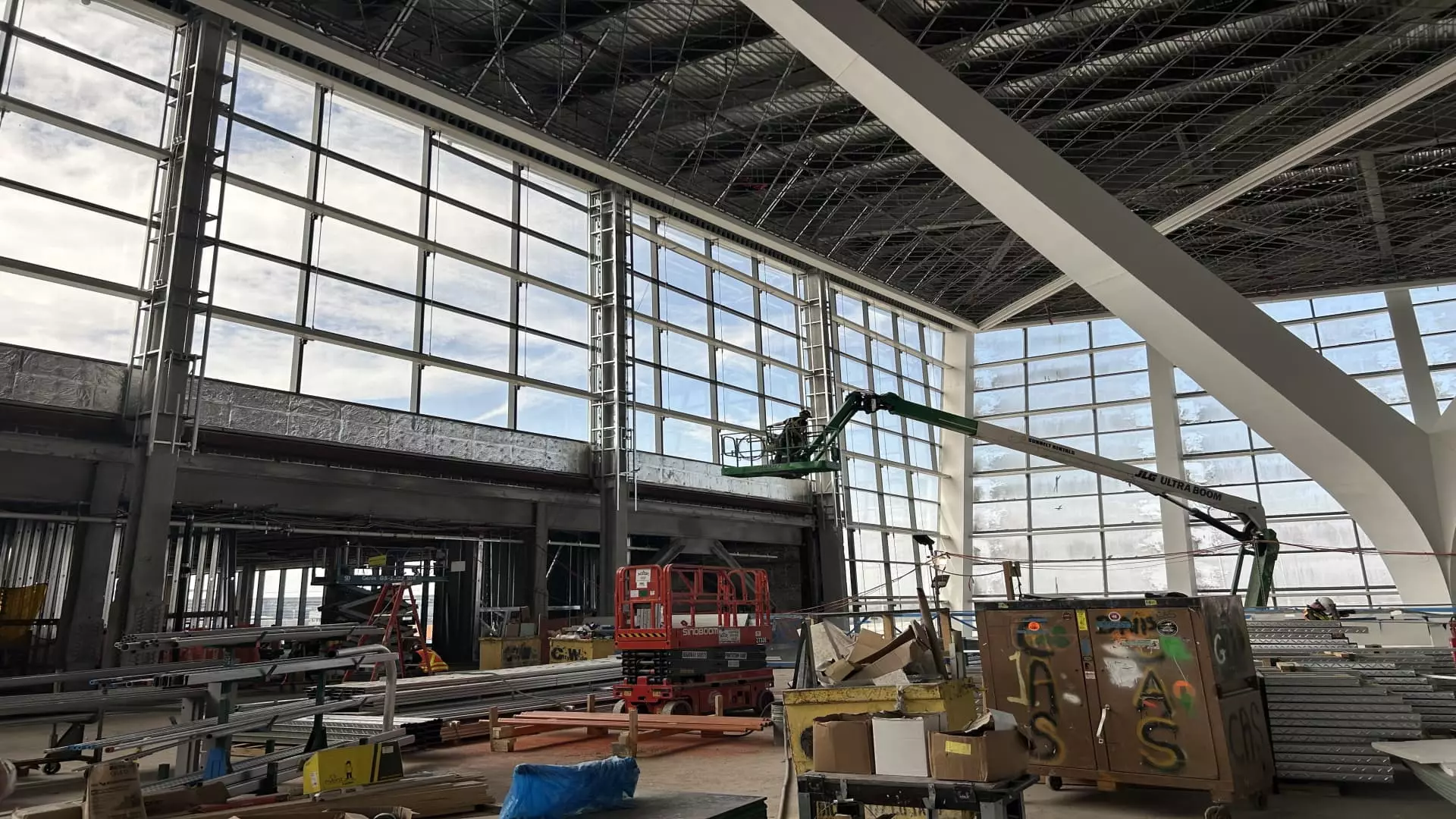John F. Kennedy International Airport’s new Terminal 1 stands as a bold symbol of hope for revitalizing America’s overstretched aviation infrastructure, but beneath its shiny surface lies a complex web of challenges and questionable priorities. While government officials and developers trumpet the project as a transformative leap toward international excellence, the reality is far murkier. The $9.5 billion investment, although impressive at face value, reflects a deeply flawed approach that risks prioritizing spectacle over substance, and modernization over sustainability.
This sprawling endeavor is being touted as the airport’s largest terminal, designed explicitly for international travelers—a focus that ostensibly caters to the global hub’s core clientele. Yet, the emphasis on aesthetic touches like flooded light, butterfly-shaped architecture, and retail space masks a fundamental neglect of core operational needs. Will these superficial improvements genuinely address longstanding issues such as congestion, outdated facilities, and environmental stressors? Or are they merely cosmetic band-aids on an aging infrastructure that desperately needs more comprehensive, forward-looking solutions?
In truth, the project exemplifies how economic and political interests often drive airport expansion without adequately grappling with long-term sustainability or community impact. As new gates accommodate long-haul aircraft, expanding passenger capacity to 14 million annually by 2030, one must ask: will this rapid growth amplify the environmental footprint, or will it move us toward a more sustainable aviation future? The hubris of building larger, more opulent terminals often overlooks the pressing need for cleaner, energy-efficient alternatives—something that becomes all the more vital in the face of climate change and urban congestion.
Strategic Flaws and the Illusion of Progress
One cannot examine JFK’s Terminal 1 without confronting the broader context in which it is unfolding. Comparisons with LaGuardia’s recent $8 billion overhaul highlight a recurring pattern: monumental spending that sometimes seems disproportionate to actual improvements in service or community benefit. While LaGuardia’s rebuild focused on alleviating congestion within New York’s tight urban fabric, JFK’s expansion appears fixated on heightening its global prestige—yet without clear evidence that these investments translate into better passenger experiences or operational efficiency.
Moreover, the delay in opening—mid-2026—raises questions about project management and logistical realism. Construction has been an ongoing saga, with each addition seemingly increasing costs and complexity without delivering immediate benefits. The decision to open only part of the terminal while the remaining features, such as retail and additional gates, lag behind opens the door to operational teething problems and customer dissatisfaction. The risk of neglecting perceived quality and practicality in pursuit of “grand designs” is palpable.
From an environmental perspective, the project’s scale and energy demands are concerning. The emphasis on expansive retail spaces and luxury amenities—like duty-free shops with instant cash-and-carry options—may cater to a particular demographic but risks marginalizing community concerns about sustainability and equitable access. These choices, while seemingly enhancing passenger comfort, could divert focus from more critical issues like reducing carbon emissions or streamlining logistics to prevent traffic chaos in surrounding neighborhoods.
The Cultural and Social Blind Spots
At the core of such large-scale infrastructure projects lies a troubling oversight: they often ignore the social and cultural landscapes they disrupt. JFK is not just an airport; it’s a vital economic artery, a symbol of New York City’s diversity and resilience. Yet, in the push for modernization, community voices risk being drowned out by corporate interests and political rhetoric championing “world-class” facilities.
The transit upgrades, including the already operational AirTrain connecting terminals and parking zones, are steps in the right direction but insufficient in tackling the region’s severe traffic congestion. Without a comprehensive plan that integrates affordable, accessible transit options with environmental sustainability, the new terminal may become yet another symbol of unsustainable urban sprawl—an emblem of progress for the privileged few, rather than inclusive growth for all.
Additionally, the choice of architecture—emanating a butterfly motif—may be visually striking, but it raises questions about deeper symbolism and cultural relevance. Does designing a terminal to evoke natural imagery genuinely reflect the diversity and complexity of the city it serves, or is it just an aesthetic gimmick designed to mask structural inadequacies? This superficial emphasis on form over function demonstrates a fundamental flaw: prioritizing visual impact over meaningful, community-centered development.
The True Cost of Progress
Ultimately, the story of JFK’s Terminal 1 is a microcosm of America’s broader struggle with infrastructure renewal: immense costs, superficial upgrades, and a persistent myth that bigger and sleeker equates to better. In an era where urgent climate action and urban resilience should be at the forefront, channeling hundreds of millions into sprawling, heavily reliant airport expansions risks perpetuating a cycle of unsustainable growth.
While there are undeniable benefits—improved passenger experience, larger capacity, and enhanced international connectivity—the calculated reality must include doubts about whether these benefits will outweigh their costs. Will the new terminal serve as a catalyst for sustainable development, or merely provide a shiny facade that delays more meaningful reforms? This project, despite its grandeur, must be scrutinized not only for what it promises but for whether it truly serves the interests of the broader community and environment that will carry its legacy.

